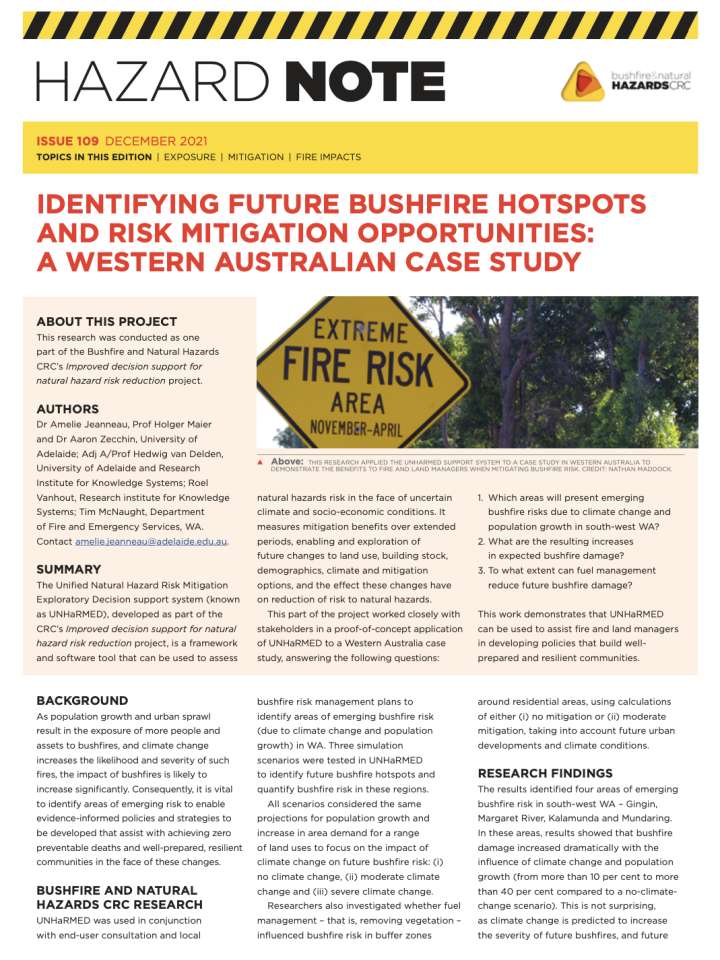Identifying future bushfire hotspots and risk mitigation opportunities: A Western Australian case study
This research was conducted as one part of the Bushfire and Natural Hazards CRC’s Improved decision support for natural hazard risk reduction project. The research is based on the premise that to reduce both the risk and cost of natural hazards, an integrated approach is needed to consider multiple hazards and a range of mitigation options.
This work answers the following questions:
- Which areas will present emerging bushfire risks due to climate change and population growth in south-west WA?
- What are the resulting increases in expected bushfire damage?
- To what extent can fuel management reduce future bushfire damage?
This work demonstrates that UNHaRMED can be used to assist fire and land managers in developing policies that build well-prepared and resilient communities. The results identified four areas of emerging bushfire risk in south-west WA – Gingin, Margaret River, Kalamunda and Mundaring. In these areas, results showed that bushfire damage increased dramatically with the influence of climate change and population growth (from more than 10 per cent to more than 40 per cent compared to a no-climate- change scenario).
Explore further
